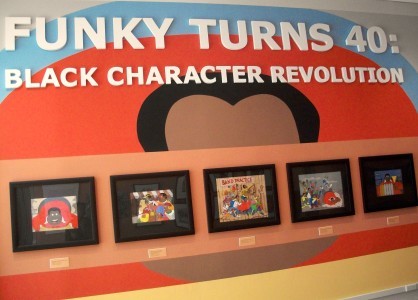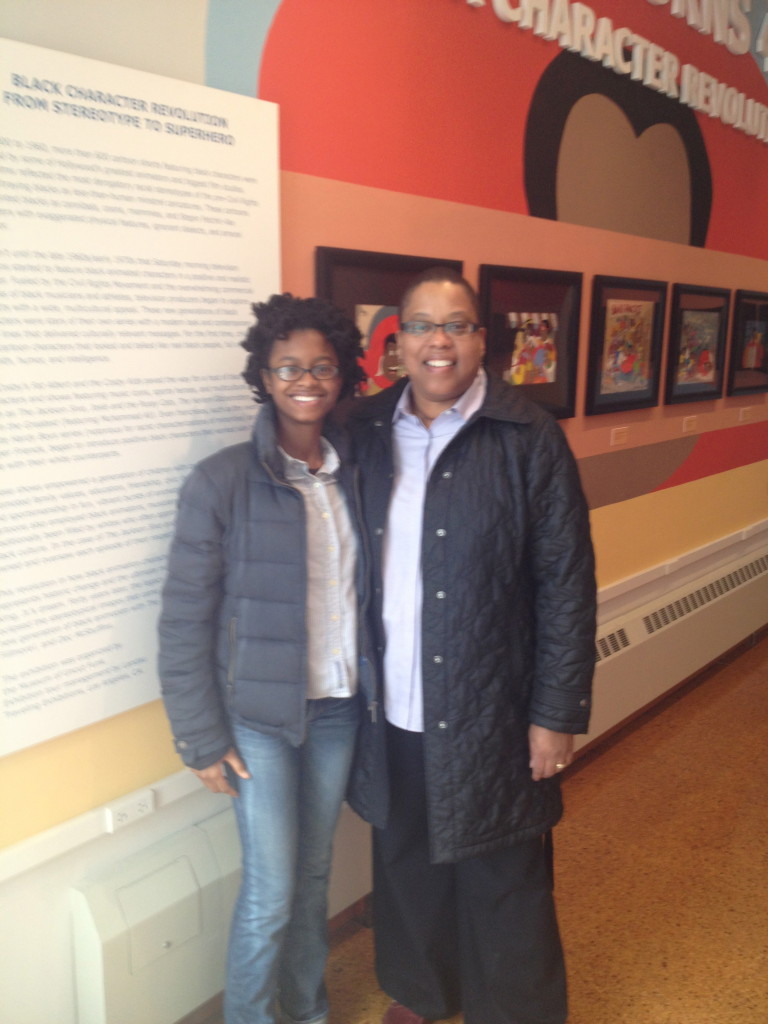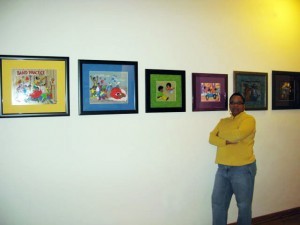FanBros reporter Maya Davis met the Museum Of UnCut Funk at the Schomburg Center For Research In Black Culture to see the Funky Turns 40: Black Character Revolution Exhibition and interview the Curators. Her review is below.
Funky Turns 40: Black Character Revolution Review
Black people don’t do time travel, right? When we think of the past, we think of slavery, Jim Crow, the Underground Railroad, and every dark, heavy moment in time that follows us like our own shadow.
Many times we do not want to look back and stir up the pain our people went through. But not everything in the past was a cause for sorrow. Remember the seventies? An explosion of Black love, pride and celebration made this decade different. The fashion, music, afros and art were vibrant and soulful, including kids’ cartoons. Loreen Williamson and Pamela Thomas have curated over 5,000 artifacts surrounding this decade for their virtual museum, The Museum of Uncut Funk. Their cartoon collection is on display at the Schomburg Center for Research in Black Culture in the Funky Turns 40: Black Character Revolution exhibit.
The Schomburg exhibit showcases Black characters in comics and animation from the late 1960s and 1970s. It was during this time that Black characters broke out from the roles of mammy, Sambo, Uncle Tom and various other stereotypes. Cartoons like the Jackson 5ive, Fat Albert and Josie and the Pussycats centered around positive representations of African Americans at the time. After listening to the Fanbros interview with the Museum of Uncut Funk, I decided to head to Harlem to check it out.
I spoke with Williamson and Thomas as they guided me through the displays. The first emotion I felt upon entering was joy. We were walking through the childhood of millions of adults. Most of the cartoons featured were broadcast on Saturday mornings where “the time slot of these cartoons was you’d have your bowl of cereal and you were sitting in front of the television just waiting,” Thomas illustrates. The colors of the walls as well as the colors of the art are bright and inviting, almost 3-D. As Thomas explained, “This top layer is called a celluloid and then you have the back layer which is the background art and in some cases the background layers I would say is on a card stock paper.” “Kind of like a watercolor painting,” adds Williamson. The psychedelic colors reflect the period well.
What also can be noted is the clothing, hairstyles, and gadgets of the characters. A large poster of “Muhammad Ali vs Superman” and a comic about the civil rights movement shows what was topical at the time. The cartoons not only serve as art, but as historical artifacts. The seventies were a period of rebellion, revolution and many firsts in positive representation. The Museum of Uncut Funk educates and inspires the current generation. Thomas affirmed, “When you get a little taste of what was 40 years ago, you know it sparks something in you. You get that soul back,” and I certainly agree.
The Funky Turns 40 exhibit will be on display at the Schomburg through June 14, 2014. For more information about visiting the exhibit click here. Make sure to follow the Museum of Uncut Funk on Twitter and check out their YouTube for more funkadelic finds.





